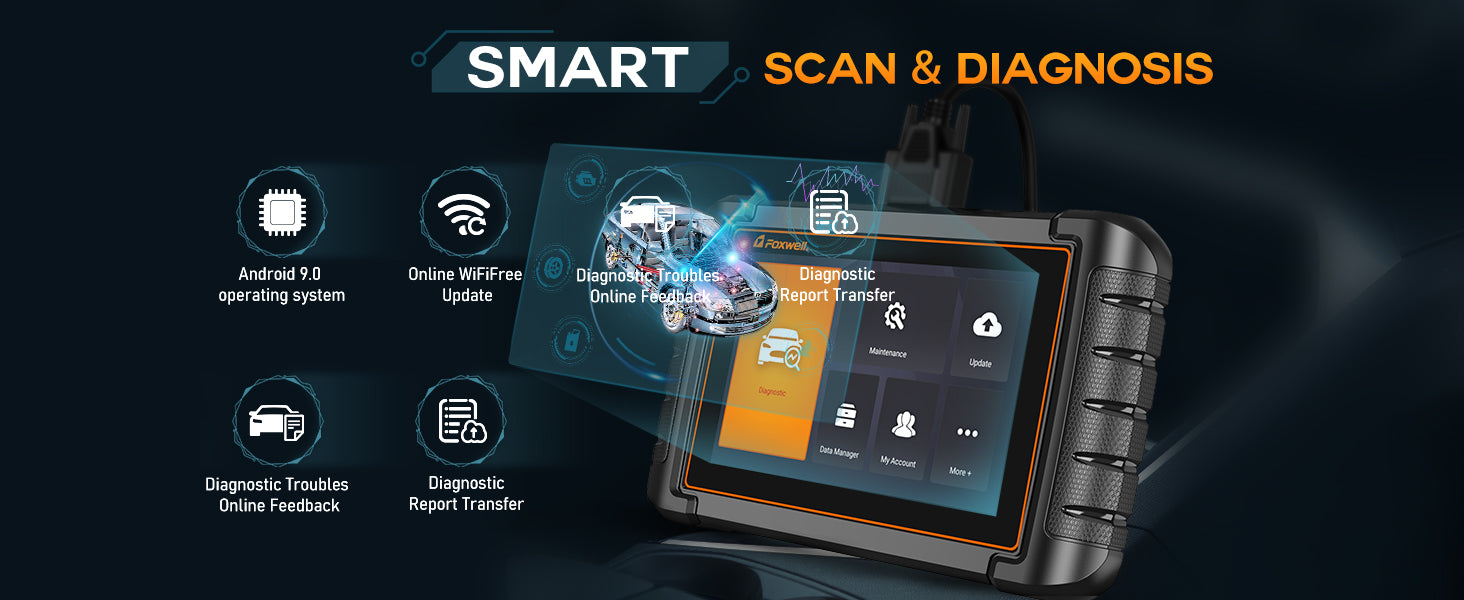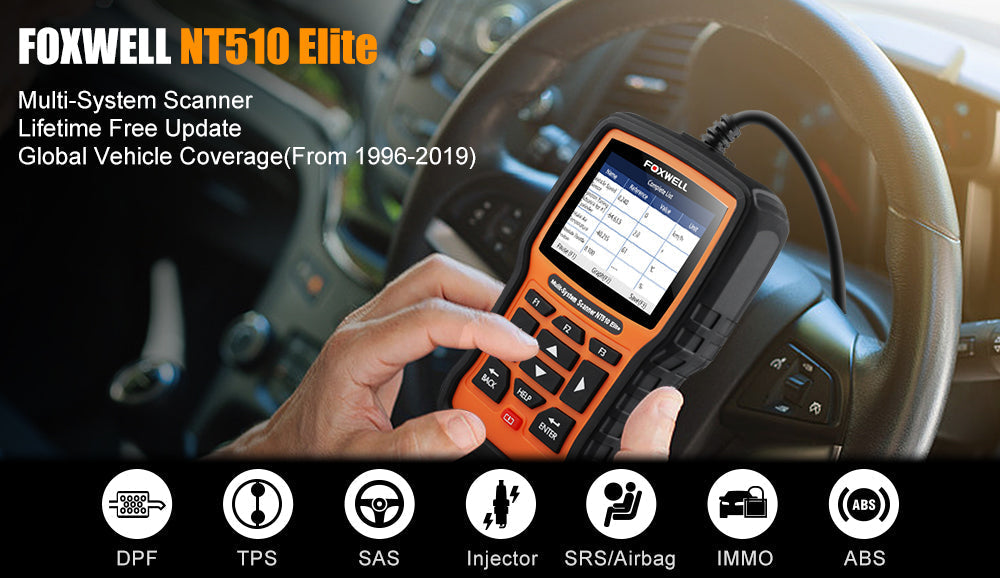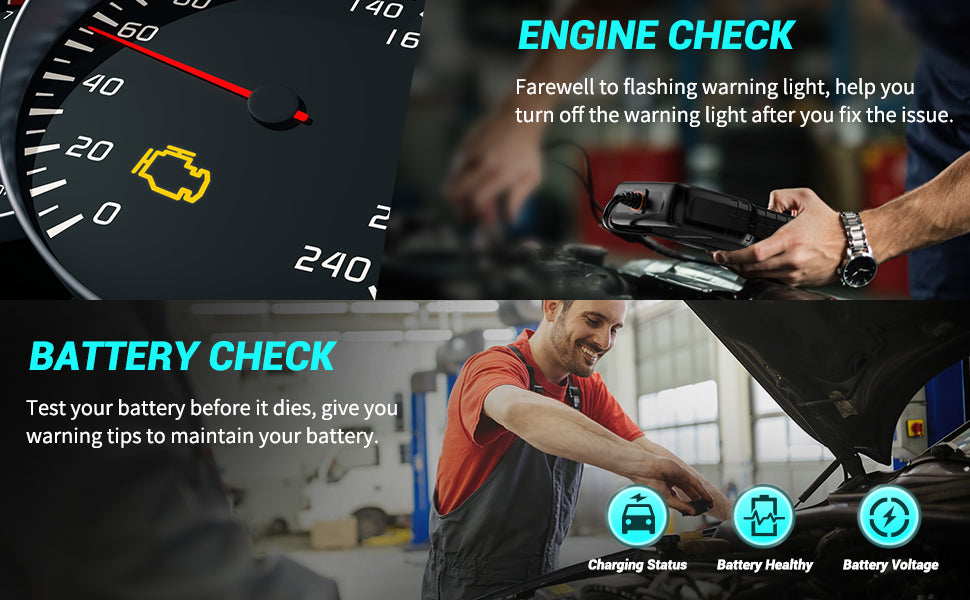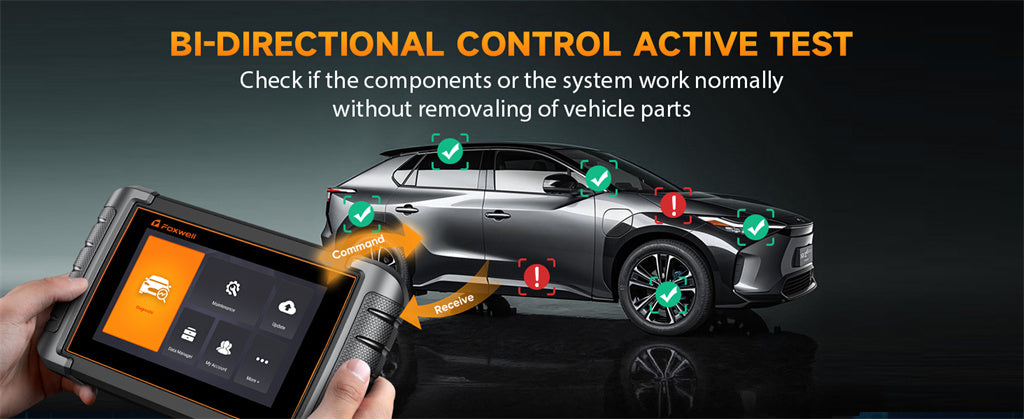When it comes to vehicle diagnostics, the tools you choose can profoundly affect your understanding and ability to address car issues. OBD2 tools are an essential resource for professional mechanics and enthusiasts, yet understanding the differences between an OBD2 reader and a scanner can be instrumental. This blog explores these distinctions while outlining why sophisticated car scanners may prove most advantageous in certain instances.

OBD vs OBD2: What’s the Difference?
Before diving into the difference between OBD2 readers and scanners, it’s important to understand the evolution from OBD to OBD2 — the foundation of all modern diagnostic tools.
| Dimension | OBD (On-Board Diagnostics) | OBD2 (On-Board Diagnostics II) |
|---|---|---|
| Generation and Origin | First generation of diagnostic systems introduced in the 1980s. | Standardized second-generation system introduced in 1996 (U.S.), 2001 for petrol cars, and 2004 for diesel in Europe. |
| Standardization | Manufacturer-specific protocols — one tool might not work on another brand. | Universal standard — compatible with most modern vehicles across multiple brands and models. |
| iagnostic Port & Communication | Proprietary ports and limited data exchange. | Standard 16-pin diagnostic connector with real-time data communication and universal access to engine and emission systems. |
| Diagnostic Capability | Reads only basic error information; limited troubleshooting. | Offers live data, standardized DTCs, and bidirectional control, supporting in-depth diagnostics and system testing. |
| Vehicle Compatibility | Older vehicles (pre-1996 in the U.S.) | All vehicles manufactured after 1996 in the U.S. (2001+ petrol / 2004+ diesel in Europe) |
OBD2 scanners are the standard for nearly all modern vehicles, offering broader compatibility, deeper diagnostics, and real-time data access. If your car was made after 1996, you’ll need an OBD2 scanner—not an OBD one.
Understanding OBD2 Tools: Readers Vs. Scanners
Basic Function and Purpose
At their core, both OBD2 scanner and reader connect your vehicle's onboard diagnostics system. While all OBD2 scanners are diagnostic tools, not all diagnostic tools are OBD2 scanners—some diagnostic tools operate at a broader or manufacturer-specific level, while OBD2 scanners are designed to work universally with OBD2-compliant vehicles.
OBD2 readers primarily function by reading your vehicle's error codes, providing an easy way of quickly determining what kind of maintenance may be needed without further details. Meanwhile, OBD2 scanners offer more in-depth analyses, not only reading these codes but also offering solutions, clearing them away, or resetting warning lights, providing comprehensive diagnostic capabilities with greater in-depth diagnostic capabilities.
OBD2 Readers Can Deliver Vehicle-Specific Data
OBD2 readers typically offer generic data that applies to multiple vehicles. This may include generic diagnostic trouble codes shared across OBD2-compliant cars. OBD2 scanners excel at providing detailed vehicle-specific data that aid in precise diagnostics. They can access manufacturer codes quickly and offer advanced insight for repairs and maintenance services.
User Interface and Ease of Use
OBD2 readers tend to feature easier user interfaces that make them suitable for DIY enthusiasts or car owners conducting basic diagnostics themselves. At the same time, OBD2 scanners come equipped with more complex interfaces that display vast amounts of information, making them suitable for professional use - with touchscreen displays supporting multiple languages further increasing usability.
Performance and Advanced Features
While OBD2 readers are suitable for basic diagnostics, scanners offer superior performance in monitoring real-time data, graphing vehicle parameters, and conducting advanced troubleshooting - providing more effective handling of intermittent or difficult-to-diagnose issues.
Scanners Have Many Advantages
Foxwell car diagnostic scanners incorporate numerous features that raise the standards of vehicle diagnosis. Let's explore their advantages further by taking a closer look at Foxwell's notable products: NT530, NT710, and NT809BT.
Foxwell NT530: Comprehensive Diagnostic Tool
The Foxwell NT530 stands out for its comprehensive diagnostic capabilities, offering OE-level diagnosis for various car models and makes. Notably, the NT530 supports full-system diagnostics, meaning it can access all electronic systems on a vehicle to conduct in-depth diagnoses like reading and clearing trouble codes, viewing live data feeds, bidirectional tests, and more—helping mechanics not only diagnose issues but also verify parts are functioning as intended after repairs .
Foxwell NT710 Enhances performance and usability
The Foxwell NT710 builds upon earlier models with advanced hardware and software upgrades. Operating on Android 9.0 allows for a quicker, more responsive user experience. It features a user-friendly 5.5-inch touchscreen interface and over 30 special functions (EPB reset, oil service reset, ABS bleeding, etc.), making diagnostic functions smooth and intuitive. One-click Wi-Fi updates simplify keeping software current without needing a PC.
Foxwell NT809BT: Comprehensive Connectivity and Diagnosis
The Foxwell NT809BT is tailored to meet the requirements of modern workshops with its Bluetooth connectivity that enables diagnostics up to 10 meters away. Equipped with Android OS and an 8-inch color touchscreen display for visibility and ease of use, its bi-directional control capability enables testing components directly without using vehicle controls; furthermore, it covers full system diagnostics.
Thanks to its Bluetooth wireless connectivity, the NT809BT lets you perform diagnostics conveniently from a distance without tangled cables—ideal for busy workshops or mobile mechanics who value speed and flexibility.
General Advantages of Foxwell Car Scanners
Versatility: Foxwell scanners are built for versatility, providing coverage of a broad array of vehicle makes and models, making them suitable for a diverse automotive repair environment. In fact, most of Foxwell scanners support most OBD2-compliant cars, SUVs, and light trucks worldwide, such as NT809BT, making them some of the best diagnostic scan tools for all cars.
Cost-Effectiveness: Foxwell scanners deliver significant value thanks to capabilities rivalling more costly professional equipment. They provide detailed diagnostic data that helps avoid unnecessary repairs while finding solutions more quickly.
Updates Made Easy: Thanks to Wi-Fi updates with one-click updates, these scanners ensure users can access the most up-to-date software without incurring additional costs - an especially helpful feature when keeping up with new vehicle technologies.
Professional Support: Foxwell provides superior customer support, offering online troubleshooting and diagnostic report-sharing capabilities that can prove invaluable when dealing with complex problems and improving repair outcomes.
Foxwell's advanced car diagnostic scanners, such as the NT530, NT710, and NT809BT, are invaluable tools for both amateur car enthusiasts and professional mechanics. Offering precise diagnostics and easy update/use/support of various vehicles makes these tools essential in automotive maintenance diagnostics and upkeep.
When Do Car Scanner Benefits Take Shape?
Foxwell car scanners become particularly beneficial when utilized during certain circumstances:
Complex Diagnostics: Advanced scanners provide deeper insight into engine misfires, intermittent stalling, or battery drains without explanation. They analyze real-time data while performing active tests, which give greater insights into what's wrong.
Routine Maintenance: Car scanners can simplify routine procedures like oil changes or brake servicing by resetting service lights and initiating system recalibrations after maintenance has taken place. This ensures that all systems of your vehicle continue functioning correctly after servicing has concluded.
Vehicle Health Monitoring: Vehicle health monitors offer enthusiasts who wish to regularly track their vehicle's performance comprehensive tools to monitor system efficiency and spot potential issues before they become expensive repairs.

Conclusion
Understanding the differences and capabilities between an OBD2 reader and a scanner is vitally important, whether you are a professional mechanic or car enthusiast. While both tools offer valuable solutions, scanners like Foxwell provide more in-depth diagnostic tools to bring vehicle maintenance up to professional standards. Thanks to its many features and benefits, investing in one could save time, provide accurate diagnostics, and extend life expectancy - ultimately saving time and money!
FAQs
Can an OBD2 scanner diagnose any car model?
No, it only works with OBD2-compliant vehicles, typically those manufactured from 1996 onwards in the US and from 2001 for petrol (2004 for diesel) in Europe.
What makes Foxwell scanners different from other OBD2 scanners?
Foxwell scanners provide extensive vehicle coverage, advanced diagnostics, and user-friendly interfaces, often with lifetime free updates.
How often should I use an OBD2 scanner on my vehicle?
Use it as needed, especially for routine checks or if there's a suspected issue, like when the check engine light is on.
What is the best way to choose the right OBD2 scanner for your car?
To select the right OBD2 scanner, consider your vehicle's make and model, the diagnostic functions you need (e.g., live data, emissions testing, or ABS/SRS checks), and your level of experience. For simple tasks like reading and clearing codes, a basic car OBD2 scanner is sufficient. However, if you need more advanced diagnostics and system access, a professional OBD2 scanner—such as Foxwell GT60—offers deeper functionality including bidirectional tests and special reset features.
Where to buy OBD2 scanner?
Foxwell scanners are available globally via authorized distributors and online stores in the US, UK, Ireland, and Canada. You can buy OBD2 scanners from major online retailers such as Amazon, eBay, or directly from Foxwell’s official website to ensure product authenticity, warranty coverage, and access to the latest software updates.
What’s the difference between a scan tool and a code reader?
A code reader performs basic functions—reading and clearing engine trouble codes—while a scan tool provides a much deeper diagnostic capability. Scan tools can access multiple vehicle systems, show live sensor data, and perform advanced maintenance functions. Essentially, a scan tool is a more advanced, professional version of a code reader.




Leave a comment
This site is protected by hCaptcha and the hCaptcha Privacy Policy and Terms of Service apply.